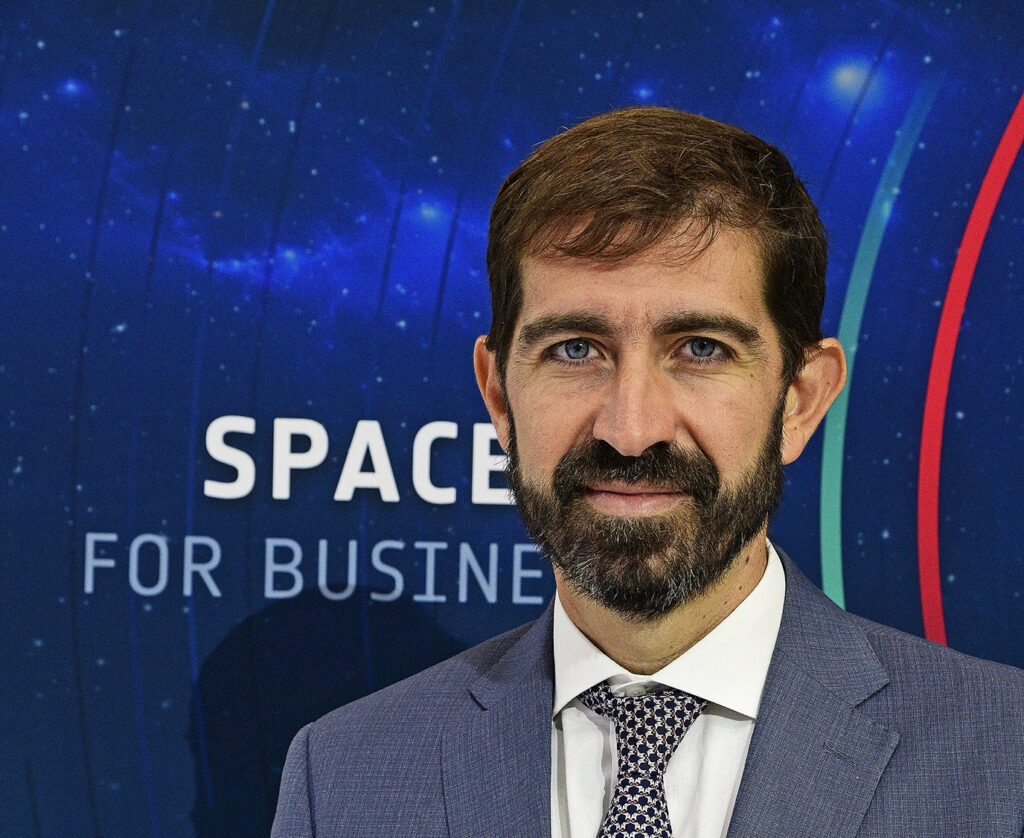Falling costs, private investment, and new business opportunities are fueling a rapidly expanding space economy poised for major growth.
Since ancient times, humans have dreamed of conquering the skies. Today, that vision is closer to reality than ever, as space presents promising commercial opportunities. A drastic drop in costs—driven by a surge in private investment over the past 20 years—has accelerated this shift.
“We enjoy the benefits of space each and every day,” says Nina Armagno, a retired US Air Force general who served as the first director of staff of the US Space Force from 2020 to 2023, speaking in February at a Washington conference hosted by the Council on Foreign Relations (CFR).
Once deemed excessively costly and unproductive, space exploration has surged in the past decade. Governments and private companies alike are pouring billions into new ventures, and the number of commercial missions and satellite deployments has skyrocketed. More importantly, there is growing recognition that space is not only a scientific endeavor; it’s an industry with enormous financial potential.
Examples of space-powered industries include navigation-based applications—such as the American GPS, Europe’s Galileo satellite system, and Russia’s Glonass—that drive many businesses, even ride-hailing services like Uber and on-demand delivery platforms like DoorDash. Similarly, satellite communication services such as Starlink are unlocking new revenue streams by expanding internet access to remote and war-affected regions.
Some experts think space-based manufacturing and resource extraction could soon become reality, opening new markets for advanced materials and pharmaceuticals that cannot be produced on Earth.
“The American economy is booming because mostly American companies are just doing phenomenal things: cutting-edge technologies, making access to space easier and then putting commercial capabilities where only governments prevailed in the past. And so the promise of space for Americans and for the world is absolutely incredible,” Armagno said at the February CFR symposium.
As investment in space accelerates and commercial opportunities expand, the rapid increase in satellite deployment presents new challenges.
The field is rife with risks, including the saturation of low Earth orbit (LEO)—which refers to altitudes up to 2,000 km (approximately 1,200 miles)—with thousands of satellites and both large and small chunks of debris. There are more than a half million bits of debris larger than 1 cm in LEO; they can do serious damage, traveling at orbital speeds up to 17,500 mph. This situation is worsened by a lack of clear regulations or international agreements. “The number of countries with at least one object in space has doubled since 2010,” cautions Esther Brimmer, a CFR senior fellow, at the symposium.
According to the private global space research and consulting firm Novaspace, a total of 1,842 satellites were launched into space from 2015 to 2019—a figure that soared to 11,344 in the five years from 2020 to 2024. In this period, China alone launched 862 satellites; the US accounted for the lion’s share, with 8,674 satellites launched.
“The presence in space has increased with a relevant impact on our daily lives—from telecommunication services to GPS signal-based technologies and now to direct services to cellphone communications. Space is more and more present in our daily lives, and we expect this presence to continue to grow,” Lucas Pleney, a senior consultant at Novaspace, tells Global Finance.
An emerging direct-to-device market—allowing private cellphones to connect directly to satellites, enabling global messaging coverage—represents a promising new business opportunity.
Lowering Space Costs Through Competition
Over the past decade, commercial spaceflight has driven a revolution, dramatically reducing the cost of transporting payloads—whether cargo, crew, or satellites—into space.
“The main driver behind this growth has been the significant reduction in costs, for both launchers and satellites themselves, enabled by technological evolution and a mix of public and private capital,” says Andrea De Blasi, a member of the Industrial Goods practice at Boston Consulting Group (BCG), focused on aerospace and defense.
Since 2000, the US National Aeronautics and Space Administration (NASA) has shifted most of its contracts from cost-plus to fixed prices—a key change that has improved efficiency in private space contracts. The cost reduction has been particularly important for LEO. In this region, satellites began using commercial off-the-shelf components instead of traditionally costly, space-graded parts, explains Pleney.
Founded in 2002 by Elon Musk, Space Exploration Technologies—better known as SpaceX—pioneered reusable rocket technology. Before the development of the Falcon 9, whose booster was first successfully launched and recovered in December 2015, rockets were designed for single use. After delivering their payload, launcher stages either burned up upon reentry, crashed into the ocean, or remained in orbit as debris.
By developing first-stage boosters capable of both launching and landing, allowing for multiple reuses, SpaceX revolutionized the industry. As a result, the cost of a launch plummeted from $50,000 per kilogram for the Space Shuttle to around $10,000 per kilogram on smaller launchers. SpaceX has also introduced rideshare missions, which bundle multiple satellite payloads into a single launch, further reducing costs.

“Cost reductions were phenomenal,” says Sven Eenmaa, chief economist at ISS National Laboratory (ISS Lab), which provides researchers with access to the International Space Station (ISS). “Now Starship is expected to reduce costs meaningfully as well. And I’m not talking about pricing, I’m talking about cost. The question is, obviously, SpaceX is a for-profit entity, and they need to make money.”
Competition would be beneficial. According to Eenmaa’s calculation using data from technology consultancy BryceTech, SpaceX has around 85% market share. “China is like one-tenth of the size in terms of mass orbit, and the Russians are even less. Everybody else is getting a very low percentage. You would need to see another strong competitor emerging.”
The sharp reduction in launching costs has made space access more affordable, creating opportunities such as space tourism, communications, and Earth-observation missions. However, the costs of in-orbit operations remain relatively high.
The Future Of Space Stations Research
For more than 20 years, the ISS has been a collaborative research hub in LEO, maintained by five space agencies: NASA, Russia’s Roscosmos, the European Space Agency (ESA), the Japan Aerospace Exploration Agency (JAXA), and the Canadian Space Agency. The ISS serves as a platform for studying the space environment and conducting scientific experiments in microgravity, with dozens of significant outcomes.
Through ISS Lab, Merck conducted protein crystal growth projects to enhance the efficacy and delivery of its monoclonal antibody Keytruda, used to treat several types of cancers, says an ISS spokesperson.
“Additionally, we have been in collaboration with both the National Institutes of Health and the National Science Foundation to validate the use of ‘tissue-on-a-chip’ technology in space, which has led to a strong surge in research where investigative teams can launch human cells and tissues into space as opposed to model organisms,” says Patrick O’Neill, Public Affairs and Outreach lead for ISS Lab. “The hope is that space may accelerate the development or improvement of therapeutics; and with these new technology advancements, we are excited about what researchers will learn in the coming years.”
Other ISS research projects include Redwire Space’s bioprinter, which successfully printed both a human knee meniscus and living cardiac tissue; and LambdaVision, a company leveraging microgravity to manufacture artificial retinas for patients with age-related macular degeneration and other retinal conditions. Beyond biomedicine, ISS sponsorship has also driven tech advancements such as Hewlett Packard Enterprise, which launched the most powerful supercomputer in space, improving data bandwidth and real-time research capabilities.

The ISS has been inhabited continuously since November 2000, with more than 700 payloads flown through ISS Lab, including 110 in each of 2023 and 2024. As demand for ISS research grows, the station faces increasing pressure to accommodate more R&D projects. NASA currently plans to decommission the ISS by 2030, transitioning to commercially owned and operated space stations.
“There are only so many payloads you can fly. There are only so many research projects you can do per year. Even though our numbers are impressive, there is still a limit to it,” says Eenmaa.
“We haven’t seen the decline in the cost of in-orbit operations and need to scale up there. I think that’s the next thing which needs to be unlocked,” he adds. “I think that’s driving scale. We’ll still require some government support to get big enough platforms in orbit to do that.”
Public Vs. Private Investment In Space
Private capital remains dwarfed by public spending, which provides essential support for developing ideas and projects.
“The market is shifting from an institutional model dominated by public funding to a business model with an increasing role of private investment, mostly to drive innovation, leading to cost-and-time optimization,” BCG’s De Blasi says. “However, public funding still outweighs private investment by a factor of 10, in both the US and Europe.”
The ESA, a 50-year-old organization founded by European nations to strengthen their presence in space, serves as a model for how governments can support private companies.
“We support both new and established companies in entering the space economy, guiding them from incubation to product development and market expansion,” says Gianluigi Baldesi, head of the Ventures and Financing office at the ESA. “ESA Business Incubation Centres host 250 startups every two years, followed by technology development programs across different sectors, such as Earth observation, space transportation, space safety, and more.”
Once a product or service is ready, the ESA also serves as an anchor customer via ESA Marketplace, providing initial business revenues for the provider. The ESA is also strengthening ties with the financial community through the ESA Investor Network, fostering connections between space startups, potential investors, and programs of the ESA itself.
German-based Constellr, a European leader in Earth observation, launched its first satellite, Sky-Bee-1, with infrared imaging and mapping technology, via SpaceX earlier this year. The company has benefited from all three stages of the ESA’s support.
“In the last years, the ESA has increasingly engaged with commercial ventures,” says Baldesi, who also oversees funding initiatives. “We’re seeing growing interest from private companies and investors, but we’re still looking forward to having the first European unicorn.”
Challenges In Space Investment
According to a January report by Novaspace, “Private investment, often regarded as a barometer of the industry’s health, has declined for the third consecutive year. After reaching $18 billion in 2021, funding dropped to $8 billion in 2023 and fell further to $5.9 billion in 2024.” Some New Space ventures are struggling; Virgin Orbit has ceased operations, while others, such as Momentus and Astra, have delivered underwhelming results, raising concerns about the long-term profitability of space enterprises. Government investment remains critical to the space economy and is expected to reach $135 billion in 2024, up from $117 billion in 2023.
BCG’s De Blasi says, “There is still a perception of high risk and a limited awareness about real business opportunities in space. Multiple industries are increasing their focus on space capabilities, such as telecommunications companies looking at direct-to-device services or insurance firms integrating space data into their asset-monitoring models and technological stacks. Yet, it will require effort from both parties to fully capture the potential benefits.”
Growth And Key Sectors Of Space Economy
Experts widely agree that commercial activity in space will continue to grow. According to Novaspace, the global space economy was valued at $596 billion in 2024, with $308 billion driven by space-enabled solutions: businesses leveraging space-based infrastructure such as satellite data and communications. By 2033, the space economy is projected to reach $944 billion, with the core space market expanding to $292 billion and space-enabled industries growing to $702 billion.
“There are three main sectors driving businesses linked to space presence,” says Novaspace’s Pleney. “The first and largest is telecommunications, which includes broadcasting—the heritage market segment that still generates most of the value for satellite operators but is increasingly being replaced by broadband services. The second revolves around Earth observation and the third is built on global navigation satellite systems.”
Pleney sees the most potential in business-to-consumer initiatives, particularly with the groundbreaking emergence of satellite-based communication directly to cellphones.
Space Tech’s Role On Earth
Earth-observation tools offer a variety of applications, including crop monitoring, weather forecasting, and disaster management. They can also be used for more specific tasks, such as assessing activity levels in parking lots to gauge foot traffic at stores or shopping centers. However, Earth-observation tools remain primarily a business-to-government or business-to-business service, limiting their growth potential.
One example of a company expanding into space is US-based farm machinery maker John Deere, which provides satellite internet connections for tractors and harvesters in remote areas.
“The John Deere and Starlink partnership has been a great pairing of speed, agility, and determination to deliver this groundbreaking solution to the market in just over a year’s time,” says Mike Kool, senior product manager for Connected Fleet at John Deere. “Since the launch of JDLink, orders have exceeded our initial expectations for the solution, which is finally bringing ubiquitous connectivity to the farm at scale, delivering tangible customer value via John Deere’s industry-leading tech stack.”
ISS Lab’s Eenmaa says, “I see the space economy growing rapidly for sure, and faster than GDP growth. We are very, very bullish on the prospects of the industry.”




